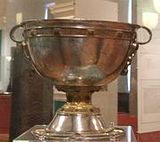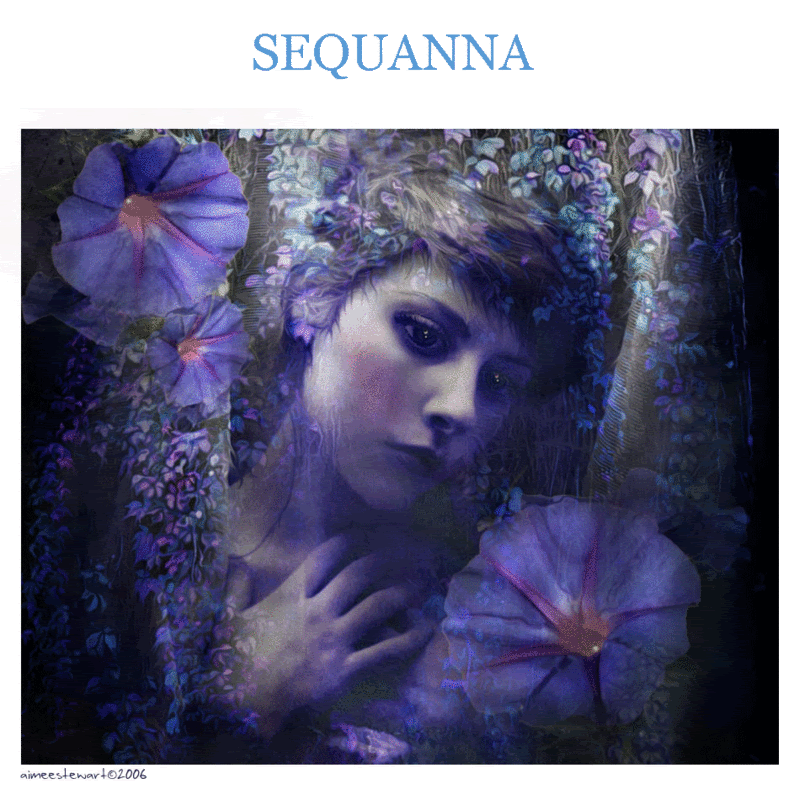Doire Na Flann

The story behind that composition that I call Doire na Flann has its deepest roots reaching back several centuries to early medieval Ireland.
Sometime in the late 8th or early 9th century the inhabitants of a monastic settlement near Killenaule in County Tipperary, buried their finest holy possessions in a nearby bog. The precise date or reason for concealment was not known and although some experts suggest that it may have happened at a much later time, others proposed it could have been hidden away fear of an imminent Viking raid.
One can only speculate on the fate of the monks but the as to the priceless hoard, it remained buried as the centuries rolled by, undiscovered by Vikings, the Normans and the Tudor Britons alike.
Then, on a dreary February evening in 1980, two treasure hunters, a father and son, armed with a metal detector unearthed the find from the piece of land known locally as Derrynaflann Island. The finders were Michael Webb Snr. and Jnr.
The exciting discovery was now national and international news. Experts from the National Museum of Ireland had identified the hoard as dating to the 8th - 9th centuries, a period of high quality Irish metalwork. Early-medieval Irish fine metalwork is generally agreed to be one of the high points of achievement in European decorative arts. In the corpus of finds from the 7th to the 10th centuries are many masterpieces of the goldsmith's art some are personal ornaments, many are objects made for the service of the Church.

Initially the government offered the two hobbyists a reward of £10,000, taking account of the fact that they had no business using a metal detector on an archaeological site. The Webbs refused this and took the matter to court.
Eventually the High Court ruled that they were entitled to keep the objects or be paid their value which was assessed as £5.5m. This decision was then overruled by the Supreme Court. In the same decision the finders were awarded £50,000 and all costs. This is the amount they would have settled for in 1980 if the government had agreed to give it to them.
So that is how the Derrynaflann hoard surfaced into awareness in this century.
How I personally became obliquely attached to the story happened when the acclaimed filmmaker, journalist and scholar Muiris MacConghail decided years later to make a documentary on the subject. He commissioned me to supply an original score and incidental music for the film.
A very enjoyable man to listen to, his brief was generously wide and open for my interpretation but it wasn’t until I saw rough cuts of the dramatic opening sequence to the story that I was galvanised by inspiration. He’d hovered over the grey ruins of the monastery in a chopper at dawn on a summer’s morning as tendrils of mist were just burning off and the resultant footage was pure delight. (The Master Smith’s Own Touch –RTE/First Run Films)
Now, I had been nursing a certain sparse, melancholic melody for sometime before this –originally penned as a requiem for the passing of someone close to me- and decided that it was perfect for Muiris’s film and high time to give it ‘legs’ so I arranged it for a male vocal ensemble and called in a small group of fine singers to record the theme. What would Irish monks of the ninth century sound like as they sung in praise in the dead of night? Because there is no written music extant from this period one can only use imagination.
Things that went ‘bump’
At this time my studio was housed in an old Georgian manse, skirting the Phoenix Park in Dublin, that had a reputation for being haunted, amongst other things. One overnight guest swore that he’d been woken during the night by the clear feeling of someone pressing a finger to his lips in a “sshh” gesture.
So the vocal ensemble was gathered good-humouredly in the ‘live’ room to record their parts and soon we were ready to go. But one thing bothered me; I really was stuck for someone to sing the top line. I complained that the ideal would have been a boy soprano and they were in short supply.
It was one of those recordings where everybody was working professionally and smoothly from the word go and the first take was miraculously perfect (despite the baritone suffering from a sore throat) and I decided to ‘double track’ the voices by sitting a second take on top, each singer having their harmonies clearly worked out.
This was done and again, it was a one-take-wonder. Everybody was called in to the control room to listen to the result.
It was then the collective jaws dropped. We could distinctly hear, sailing sweetly over the top of the manly ‘monks’ voices, a cherubic contra-melody that was conspicuously pre-pubescent. Where on Earth –or otherwise! -did this voice come from?
Of course, it was very probably a trick of the room’s natural acoustics that created the harmonic resonance but the effect on the listeners added goose-bumps on the goose bumps. Indeed, some went away that night believing in things that hadn’t prior to arriving.
And so the story of my ‘haunted’ studio continued to grow.
Sure, the lights used to flicker on and off but then the wiring in the place was lethal to begin with. And when some staff mentioned hearing disembodied eerie voices I quickly found its source; Russian radio being faintly picked up on idling near-field monitors…and so forth.
But yes, I’ll freely admit some odd stuff went down there all right – and I’m not just talking about the creative output- It was a damp old pace and packed with electronic equipment which lent a crackling, static-riddled atmosphere to most of the proceedings there.
A visiting voice-over artist of a psychic bent once told me he sensed at least two violent deaths connected with the house. A little research indeed opened suggestive possibilities. A former owner of the house was kicked to death by his own horse sometime in the ‘forties and back in December 1919 the IRA ambushed the then Lord Lieutenant, Lord French and one of their number, Martin Savage, was killed, dying we are told, on the doorstep*
All of this apart, the track Doire na Flann remains as a timeless piece straight out of that part of my heart that is connected with things ancient and Irish and inexplicable. Recently I thought it time I revived my back catalogue and put it out there for enjoyment and it is the first offering in a planned series.

You can download/preview Doire Na Flann as included as part of my On-Line album 'Sequanna'’ by clicking here;
Or preview it on its own at another ‘incarnation’ at You Bloom
For media professionals interested in a non-exclusive license for Doire Na Flann you can contact http://www.bardis.ie/home.htm
* O'Farrell P (1997), pg xv; Breen (1989), pgs 85-92; Ryan (1945), pgs 117-122; Breen in The Kerryman (1955), pgs 43-46

0 Comments:
Post a Comment
<< Home